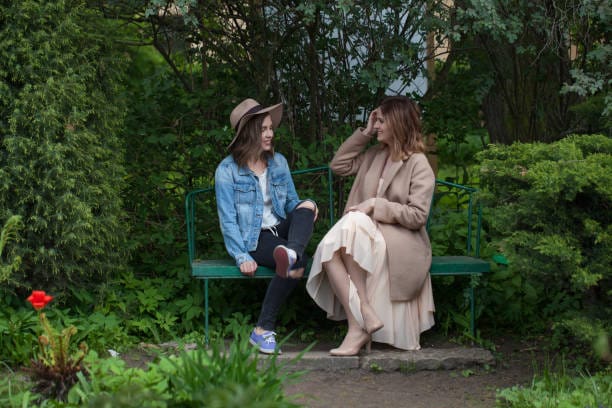Long before we whisper “I love you,” before our first kiss, before heartbreak or butterflies or marriage vows, we have already learned everything we believe about love. Not through textbooks or poetry. But in cribs. In lullabies. In the arms that held us—or didn’t. In the eyes that met ours with warmth—or turned away in cold silence.
Love begins in childhood.
But it does not stay there.
It follows us, quietly and fiercely, into adulthood—where it begins to speak in the language of romance. How we attach to our partners, how we trust, argue, crave, or distance—these aren’t just habits. They’re echoes of the way we first experienced connection, or disconnection, with the people who raised us.
This is the heart of attachment theory. A psychological map that traces our adult relationship behaviors all the way back to our earliest bonds. A theory not only of love, but of longing. Not only of connection, but of the wounds that make connection feel terrifying.
To understand how we love now, we must first understand how we were loved then.
The First Mirror: Caregivers as Love’s Blueprint
In the beginning, love is survival.
A baby cannot feed itself, speak, or even regulate its own emotions. It is entirely dependent. Its world is made—or unmade—by the responsiveness of its caregivers. Whether a parent smiles when it cries, whether arms pick it up when it’s afraid, whether voices soothe it back into safety.
These small, repeated interactions don’t just teach the child what love is. They teach the child what to expect from love.
If the caregiver is consistently available, attuned, and nurturing, the child begins to feel secure. It learns that love is safe. That others can be trusted. That its needs matter.
But if the caregiver is unpredictable, emotionally distant, overly anxious, rejecting, or intrusive, the child adapts. Not consciously, but deeply. It learns that love is unreliable. That it must either fight for attention, suppress its needs, or fear the moment affection disappears.
This emotional dance becomes the blueprint—the “attachment style”—a child carries forward. Not just for romantic love, but for how they love themselves, how they seek comfort, how they survive separation and intimacy, and whether they believe love can last without fear.
The Securely Attached Heart: When Love Feels Like Home
Those lucky enough to grow up with secure attachments often carry a quiet, almost invisible strength into adulthood.
They’re not perfect. But they feel fundamentally safe in relationships. They trust easily. They’re not haunted by fears of abandonment or suffocated by intimacy. They handle conflict without falling apart. They know how to ask for support without shame, and they offer it without conditions.
For them, love is not a battlefield. It’s not a rescue mission. It’s a partnership. An emotional home.
This doesn’t mean they never feel jealousy or insecurity. It means those feelings don’t control them. They know love isn’t earned through performance. It’s sustained through mutual care.
Their secret isn’t luck. It’s that their early emotional world taught them they are worthy of love—not for what they do, but for who they are.
And because of that, they can give that same kind of love to others.
The Anxiously Attached Heart: When Love Feels Like Hunger
Not all children are so fortunate. Some grow up in homes where affection is inconsistent—where a caregiver is sometimes warm, then cold. Attentive, then dismissive. Present, then absent.
This unpredictability creates anxiety.
The child becomes hyper-aware of emotional cues, scanning constantly for signs of disconnection. They learn that love must be earned. That closeness is fragile. That abandonment is always around the corner.
In adulthood, this child becomes the anxiously attached partner.
They fall in love easily, but never feel fully secure. They crave reassurance, text obsessively, replay conversations, and panic when their partner pulls away. Their fear of being alone is so overwhelming that they often choose connection—even unhealthy connection—over solitude.
They may be loving, affectionate, even poetic. But beneath their devotion lies a deep, raw wound: the belief that they are too much to love, and never quite enough to be loved back.
When they say “I love you,” they also mean: “Please don’t leave.”
The Avoidantly Attached Heart: When Love Feels Like a Trap
Others learn a different lesson.
Raised by caregivers who were emotionally unavailable, dismissive, or overly critical, some children learn that vulnerability leads to rejection. That independence is safer than intimacy. That expressing needs is dangerous.
So they shut down. Not emotionally, but relationally.
As adults, these individuals often adopt an avoidant attachment style. They pride themselves on self-reliance. They downplay emotions. They keep people at arm’s length. They may enter relationships, but pull away the moment things get too close.
To them, love feels threatening. Not because they don’t want it—but because they were never taught how to feel safe with it.
They might seem calm, logical, even aloof. But inside, they’re wrestling with the terror of being engulfed, exposed, or hurt again. And so, they build walls—sometimes even from the people they love most.
They don’t say “I love you” easily. And when they do, they often struggle to trust the love they receive in return.
The Disorganized Heart: When Love Feels Like Chaos
There is another, more painful pattern—disorganized attachment.
This occurs when a child’s caregiver is both a source of comfort and fear. Often the result of trauma, abuse, or emotional volatility, this attachment style is born from confusion. The child does not know whether to approach or avoid. They want love, but fear it at the same time.
In adulthood, this creates a devastating pattern.
Those with disorganized attachment often seek intimacy with desperation, but once they get it, they sabotage it. They may push partners away, test them, or create conflict. Not because they don’t care—but because love has always felt unsafe.
They long for stability, but expect chaos. They crave affection, but prepare for betrayal.
Their relationships are often intense, stormy, passionate, and short-lived. Underneath it all is a nervous system trained for emotional survival, but starved for emotional safety.
They are not broken. They are grieving what love could have been—and still might be, if healing is allowed to begin.
Repetition Compulsion: Why We Love the Familiar—Even When It Hurts
One of the most heartbreaking truths about attachment is this: we often choose partners not based on what we need, but on what feels familiar.
Even if that familiarity is painful.
The child who had to chase love becomes the adult who chases unavailable partners. The child who was smothered becomes the adult who fears closeness. The child who was abandoned finds comfort in partners who leave.
This is known in psychology as repetition compulsion—our unconscious drive to recreate the emotional dynamics of childhood in adult relationships, hoping for a different outcome.
It’s why people stay in toxic relationships. Why they fall in love with someone who reminds them of a distant parent. Why they sabotage good love when they finally receive it.
Our hearts try to heal old wounds by returning to the scene of the original injury.
But healing doesn’t come from repeating the past.
It comes from doing something radically new.
The Possibility of Healing: Love As a Second Language
The most beautiful truth of all is this: attachment styles are not life sentences.
They are patterns. And patterns can be broken.
The human brain is wired for adaptation. Through therapy, healthy relationships, self-reflection, and emotional work, we can rewire our attachment systems. We can learn a new emotional language. One that speaks safety instead of fear. One that listens before reacting. One that holds instead of hides.
This healing often begins in what psychologists call earned secure attachment—when someone with an insecure style gradually develops a secure one, often through a relationship that models consistency, warmth, and emotional availability.
That relationship might be romantic, but it could also be a friendship, a therapist, a mentor. Anyone who becomes a safe mirror. Someone who stays when others left. Who listens without judgment. Who sees the wounded child in you—and loves you anyway.
With time, you begin to expect love instead of fear. You stop bracing for abandonment. You soften. You trust. You bloom.
You learn, finally, that love can be a sanctuary—not a battlefield.
Love as Reparenting: Becoming Who You Needed
At the core of attachment healing is the idea of reparenting—becoming for yourself what you didn’t receive as a child.
If you weren’t held, you learn to hold yourself. If you weren’t heard, you learn to listen inward. If you weren’t protected, you learn to set boundaries. If you weren’t valued, you learn to cherish your worth.
This isn’t about blaming your parents forever. It’s about acknowledging the emotional inheritance you received—and choosing to change the pattern.
It’s slow work. Tender work. Some days you’ll feel like you’ve grown wings. Others, like you’ve gone backwards. But every time you choose curiosity over criticism, presence over panic, compassion over control—you’re healing.
You’re not just changing how you love others.
You’re changing how you love yourself.
The Meeting of Wounded Hearts
Perhaps the most bittersweet part of adult love is that we rarely fall for someone who is perfectly healed.
Instead, we fall for fellow travelers. People with their own scars. Their own histories. Their own fears and triggers and ghosts.
And when two wounded people love each other, something holy can happen—if they are willing to see each other. To sit in the fire of discomfort. To grow together instead of apart.
This kind of love isn’t clean. It’s not always romantic. But it’s real.
Two people learning a new dance. Speaking a new language. Building a new story from the ruins of old ones.
It’s not perfect.
But it is possible.
The Future of Love: A Different Legacy
In the end, how we attach in childhood doesn’t just shape how we love.
It shapes what we believe love is even supposed to be.
If we were raised on anxiety, we confuse chaos with passion. If we were raised on neglect, we mistake distance for independence. If we were raised on inconsistency, we crave the emotional rollercoaster more than the quiet steadiness of real love.
But we don’t have to pass these beliefs on.
We can interrupt the inheritance.
We can give our partners, our children, and ourselves a new legacy. One where love is safe. One where needs are not punished but welcomed. One where no one has to fight for affection, silence themselves to be accepted, or fear that intimacy means abandonment.
This is the deepest work love ever asks of us.
To heal the past while holding the present.
To become the caregivers we once needed.
To finally, bravely, choose love—not because we are desperate for it.
But because we are ready for it.






